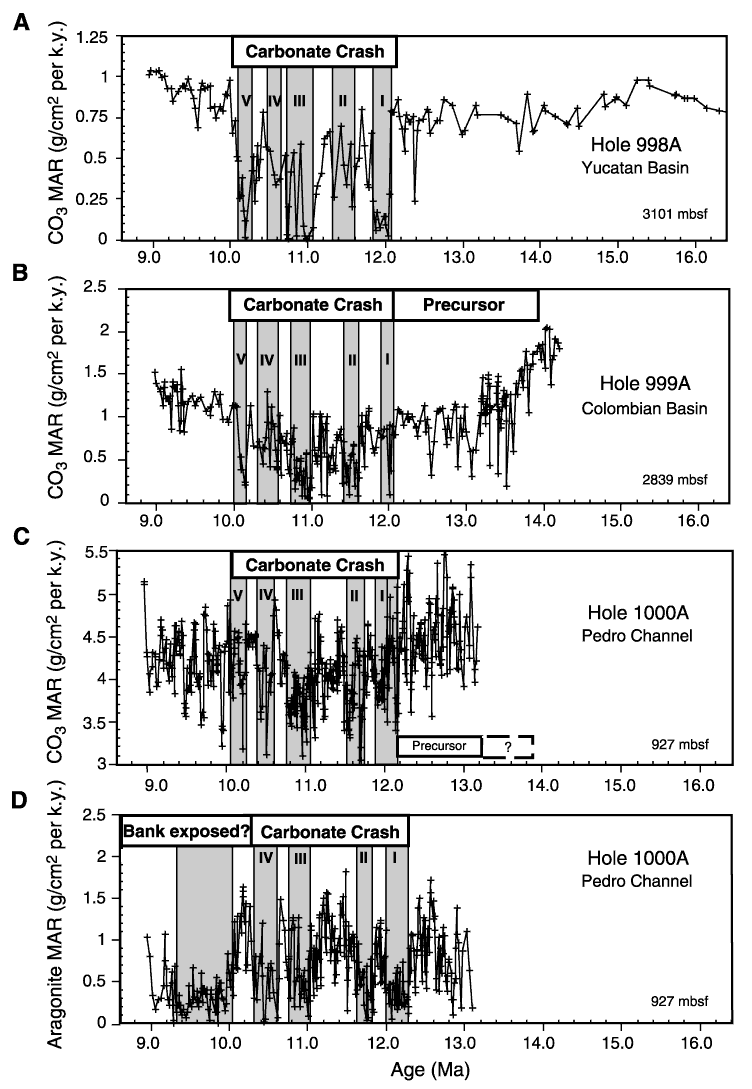Figure 12. Carbonate mass accumulation rates (CO3 MARs) for (A) Hole 998A, (B) Hole 999A, and (C) 1000A. As in Figure 11, five carbonate-dissolution episodes (I-V) are identified and emphasized by the shaded column. The interval of the bundled five episodes, approximately synchronous between the three Sites 998, 999, and 1000, is referred to as the Caribbean carbonate crash, which lasted for ~2 m.y. Note that times with low-carbonate MARs are already observed prior to the onset of the carbonate crash in Holes 999A and 1000A, an interval referred to here as the carbonate precursor. This pattern contrasts with the one observed at Site 998, where no carbonate precursor is observed. D. Aragonite MAR. The first four episodes characterized by low-aragonite MAR episodes in Hole 1000A are nearly contemporaneous with the carbonate-dissolution intervals observed in Holes 998A, 999A, and 1000A. The younger low-aragonite MAR episode (10-9.3 Ma) in Hole 1000A is unusually long and occurred when the CO3 MAR had already recovered following the carbonate crash. This interval of low-aragonite MAR perhaps corresponds to an interval when the carbonate bank tops adjacent to Site 1000 were exposed because of low sea level and, therefore, were not producing a large volume of neritic carbonate.

![]()